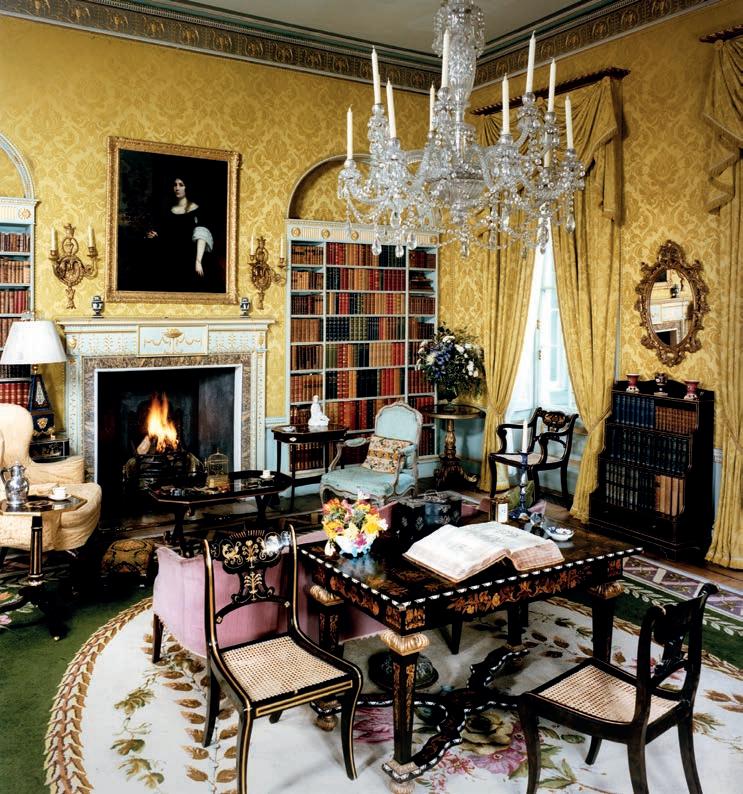
5 minute read
goes behind the scenes at a special country house sale
e Drawing Room at Flaxley Abbey
SALEROOM SPOTLIGHT

20th-century country house style is on o er this month when pieces commissioned and owned by the well-known stage designer and ‘Bright Young ing’ Oliver Messel go under the hammer

There’s a chance for collectors to own pieces once owned by Oliver Messel (1904-1978), one of the greatest stage and interior designers of the 20th century, when almost 300 lots, ranging from glassware to books, go under the hammer this month in Berkshire.
Messel – the uncle of Princess Margaret’s husband Lord Snowdon – spent 1960 to 1973, on and o , reimagining Flaxley Abbey in Gloucestershire’s Forest of Dean, for its owner the industrialist Fred Watkins. e result was a country house interior par excellence with every room staged to tell its own story.
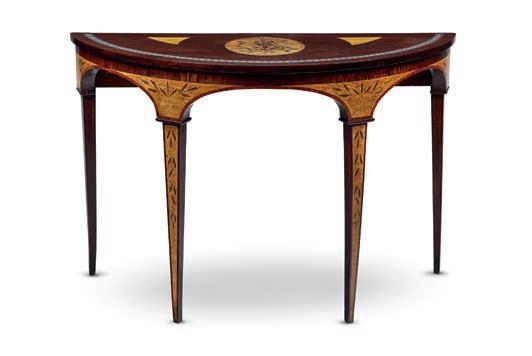
Above Oliver Messel, photograph by James de Vries (courtesy of the Messel Family Archive and Collection)
Above right 16th- century Italian Maiolica charger from the Messel collection, it has an estimate of £600-£800 at this month’s sale
Right A mahogany and scagliola inset console table, early 20th century with rosewood and tulipwood banding, it has an estimate of £300£500 at this month’s sale Above Charles II painted oak, mother of pearl and bone inlaid enclosed chest of drawers, which carries an estimate of £10,000-£15,000
Head of sale, Joe Robinson, said: “Flaxley Abbey is one of an ever-depleting number of interiors created by Messel still in existence. As well as designing the interiors, he also supplied a great number of works from his own personal collection at 17 Pelham Place, as well as his parents’ homes at Nymans, Holmstead Manor and 104 Lancaster Gate.”
At one point Messel had so denuded his own home of possessions he wrote: “Poor Pelham Place, I gather, is now stripped to the bone”. Fred Watkins who commissioned Messel wrote: “Once he had an inspiration, he’d get a piece of paper and sketch it out. What could have taken me ve years, would take him ve minutes.”
Renaissance man
Over a wide-ranging career, which spanned portrait painting to designing the shoes Elizabeth Taylor wore in Anthony and Cleopatra, Messel’s career as a theatre designer later morphed into interiors. ere is even a colour named after him – Messel green – a sage-like shade which can still be seen in many Caribbean properties on which he worked. It was a chance meeting in 1960 between Watkins’ wife Phyllis and Messel at the London shoemakers Rayne that led to a commission to redesign the interiors of the former 12th-century monastery. e Watkins family hoped Messel’s amboyant designs would add a warmth and a
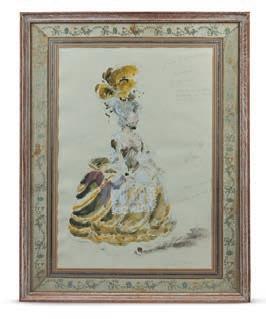
renewed sense of history to the house. Among the 291 lots on o er at Dreweatts on October 3 is an Aubussonstyle woven carpet conceived by Messel and an 18th-century English School painting and set of eight 1730 George II walnut and parcel gilt dining chairs – purportedly from Palazzo Altieri – both of which formerly adorned the Messel family home of Nymans in West Sussex.
Bright young thing
Born into a wealthy family, Messel was one of the ‘Bright Young ings’, including Cecil Beaton, Noel Coward, John Betjeman, Nancy Mitford, Edith Sitwell and Evelyn Waugh. When his nephew, Antony Armstrong Jones (Lord Snowden), married Princess Margaret his family’s lifelong connection with the royals began. He was responsible for many of the original houses on Mustique, including the redesign of Princess Margaret’s home Les Jolies Eaux. Another success was his Regency-inspired suite at London’s Dorchester Hotel, with its gold scallop-shaped lavatory seats, once touted as “Elizabeth Taylor’s favourite place to stay in London.”
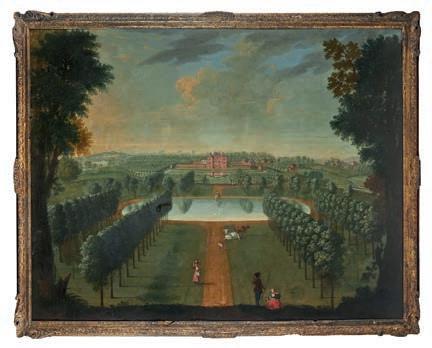
AUCTION fact file
WHAT: The Collection Formerly from Flaxley Abbey: An Oliver Messel Commission When: October 3 Where: Dreweatts, Donnington Priory, Oxford Rd, Donnington, Newbury RG14 2JE Viewing: Donnington Priory, September 29-30 from 10am-4pm; October 1-2 from 10-3pm and online at www.dreweatts.com
Above left Messel’s costume design titled Ceus Dressed Up, one of several similar artworks in the sale, has an estimate of £800-£1,200
Right North Italian school, 18th century, A Footman with a Pike, oil on canvas, formerly in the Messel family collection, has an estimate of £400-£600 in this month’s sale
Left An English School painting, c. 1740, taken from the drawing room of the Messel’s family home, Holmstead Manor, before being incorporated into Flaxley Abbey. It is estimated to fetch £7,000-£10,000
Below left A set of eight George II walnut and parcel gilt dining chairs, bearing the arms of the Altieri family, has an estimate of £10,000£15,000

‘At one point Messel had so denuded his own home of possessions for the commission he wrote: “Poor Pelham Place, I gather, is now stripped to the bone”’ IN MY OPINION...
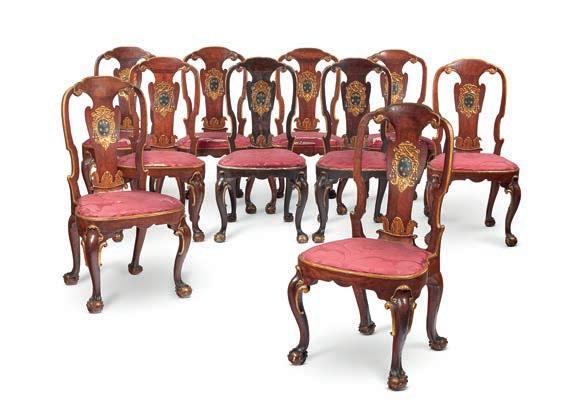
We asked Dreweatts’ head of house sales and private collections, Joe Robinson, for his sale highlights Why is the sale so important?
Messel was one of the iconic figures of 20th-century design, whose romantic, whimsical, and wholly original style has influenced a generation of architects and decorators. Alongside the Messel Suite at the Dorchester hotel, and his extensive architectural work on the islands of Mustique and Barbados, Flaxley is one of his most important and complete commissions. It remains the only country house ever remodelled by him.
Which pieces sum up the Messel style?
For Messel, Flaxley Abbey was a stage on which to enact and create grand, centuries-old narratives. Interestingly, it is around this time (1950s-1960s) we see a broadening of country house taste, away from the ‘Georgian fixation’ and an increased appreciation of earlier periods. Messel’s upbringing meant he had an appreciation of these earlier styles and was fastidious in achieving them.
Have you got a favourite piece?
At the lower end I am drawn to a humorous little oil on canvas (above) which came from Messel’s parents’ home at 104 Lancaster Gate. At the higher end, the Altieri chairs are pretty spectacular. Possibly from Palazzo Altieri in Rome and one of the Messel family treasures which were supplied to Flaxley, again, from Lancaster Gate.
Is the country house style returning?
It’s a style which sits outside fashionable interior design and collecting. There is a subtle yet ineffable confidence to it which people find captivating but infuriatingly difficult to achieve. The select number of people who have been successful in achieving it are generally lauded as among the pre-eminent taste makers of their generation such as John Fowler and Christopher Gibbs. Changing lifestyles in recent times sparked people’s desire for comfort over the wish to live and work in minimalist interiors.


